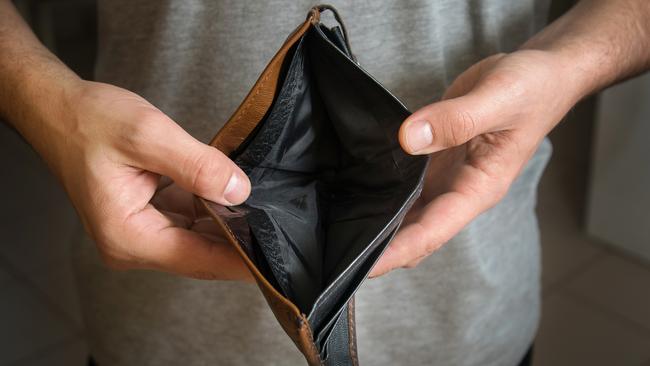
Cost-of-living issues, the umbrella term for household bills, petrol and power prices, mortgage costs, taxes and wages, have resurfaced to where they were at budget time: front and centre of the political fight.
Inflation is back and it’s not an equal opportunity destroyer, hitting hardest in Perth, Brisbane and Tasmania, where the government is defending a swag of marginal seats.
The Reserve Bank may hold fire on Tuesday, delaying the first rise in official interest rates since 2010 until June.
Either way, higher home mortgage costs are coming.
Regardless of who’s in power, if interest rates rise by, say, two percentage points over the coming term, there will be a decent hit to consumer spending and a 15 per cent drop in home prices.
Hip-pocket pain is real, and it’s driven by rising prices for things families can’t do without and pay stagnation.
Voters nominate living costs as their top concern for government action, even amid ongoing Covid-19 infections, war in Ukraine, the threat of a militarising China and growing calls for climate action.
The March quarter inflation figures were always going to be bad news for a government running on its economic record and an opening for an opposition hammering home the decline in workers’ purchasing power.
Josh Frydenberg’s $8.5bn relief package, which includes a halving of petrol excise, $250 cash handouts and a tax offset of $1500 for some, will be banked, ignored or forgotten in the campaign melee.
Voters know pandemic-related supply disruptions and hot demand are driving up prices for building materials and labour.
Tradies are passing on those costs quicker than you can say “major banks”.
Consumer inflation is really biting for essential items, such as food, health, housing and fuel.
In the year to March, the price of non-discretionary items rose by 6.6 per cent, more than twice the rate for discretionary goods and services.
Inflation is also hitting key demographics, such as self-funded retirees and working families, harder than other groups. Around one million homeowners have never experienced a lift in mortgage rates.
This adds up to an electorate that is looking for believable action on easing the squeeze, not graphics that show how much lower Australia’s inflation and jobless rate are compared with other rich countries.
Yes, the national vote average matters in the end, but inflation is being driven by different things in different places, and government assistance is being withdrawn.
In Perth, where the Coalition has three seats seen as at risk of being lost to Labor, headline inflation is 7.6 per cent.
The price of new homes in Perth rose by 16 per cent in the quarter, due to fewer grant payments from Canberra’s HomeBuilder and WA’s housing construction programs.
With vacancies at historically low levels, Perth rents were up almost 10 per cent in the past year. Rents have also soared in Darwin (up 11.3 per cent), where the Coalition is trying to win Solomon, which Labor holds by 3.1 per cent.
Inflation is ahead of the national average in Brisbane, where Labor is on the hunt for three seats, and in Tasmania, where the Coalition holds Bass (0.4 per cent) and Braddon (3.1 per cent).
Each day the major parties try to set the agenda to suit their campaigns but on May 21 kitchen-table realities will seal the election result.
Neither the Coalition nor Labor is close to the sweet spot on policies to alleviate the current pain and then chart a safe path out of the fog of financial uncertainty.




The election contest has been reset with one devastating “print”, as economists call statistical releases, catching up with the bill shock families are experiencing every day.